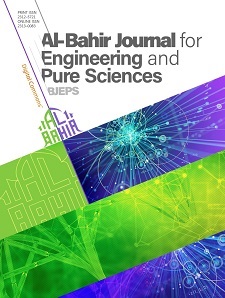Abstract
The tremendous development in various industrial and agricultural fields has led to an increase in pollution of soil and water bodies, which has been reflected in the quality of agricultural products and their quantity, as well as the damage that this pollution causes to human health and the growth system of other living organisms. Many soils are polluted with heavy metal elements like lead (Pb), zinc (Zn), cadmium (Cd), chromium (Cr), copper (Cu), iron (Fe), aluminum (Al), and mercury (Hg), which makes the environmental situation more difficult. As part of this sensitive stage, monitoring and analysis have become essential to assess the risk resulting from pollution and determine current environmental trends accurately and promptly. Established on the laser's produced plasma, a novel element analysis way called laser-induced breakdown spectroscopy (LIBS) has been developed. This method involves applying laser pulses to the sample to ablate it. This process causes the material to evaporate and ionize in a hot plasma, which the spectrometer then analyzes. The concentrations of various elements of environmental importance, like copper, cadmium, calcium, barium, magnesium, chromium, manganese, titanium, phosphorus, iron, zinc, and others, are determined using this technique because it has shown to be a reliable and efficient tool. Elements are detected by their spectroscopic fingerprint. The last twenty years have witnessed the presentation of much research in this field, which has dealt with various technical and environmental aspects. In this study, provided the basic principles of LIBS for soil analysis included The formation of plasma mainly consists of heating, melting, evaporation, ionization, and excitation processes, many of these studies will be reviewed to find out the latest developments, identify differences between researchers, and discuss several aspects related to these studies. This understanding will help optimize conditions for improved signal quality and stability. Another aim is to develop effective noise decreasing methods, such as signal averaging and advanced data processing techniques, to enhance the analytical features of LIBS and ensure accurate readings. The study will also explore the pollutants detection mechanisms inherent in LIBS, and will address the challenges associated with sample preparation, striving for minimal processing to facilitate direct analysis of soil samples. By achieving these objectives, the study aims to establish LIBS as a robust and reliable tool for assessing soil health and monitoring environmental contamination. It will make it easier for readers to comprehend the state of the LIBS technique's research in soil analysis today.
